On Thursday I took a magnificent trip to both the Old City of Akko (Acre for some people) and Rosh HaNikra. Akko is one of the oldest port cities in Israel and is located in the Western Galilee – between Haifa and the border. Rosh HaNikra is at the border, along the same coastline. As is the custom, I will be relating the journey and it will be a trilogy of posts: Two of Akko and one of Rosh HaNikra. Here goes the first part of the Akko trip:
I began my morning in Karmiel where I picked up my special tour guest, an older woman from Oak Park (where I grew up), and the two of us headed west to Akko. The bus took us through some industrial areas of Arab villages which was atypical for bus routes but eventually we arrived in Akko and took a taxi to the Old City. There, this was the first magnificent site that greeted us – majestic palm trees in front of majestic old walls, the El Jazzar Wall:
From there we walked among the mangrove trees to the Visitor’s Centre where we looked around at the exhibits and then bought tickets outside, tickets to a whole slew of museums as well as the cable car ride at Rosh HaNikra (massive savings, if anyone is interested in doing both places in the same year). The first place, the first ticket, was the Hospitaller Fortress, a huge Crusader edifice:
We picked up audio devices that we were able to activate different recordings for different sites within the huge Crusader complex, those made for a great increase of knowledge during our tour of the fortress. There were so many halls and rooms, all with amazing arch ceilings made of stone blocks – an perplexing amount of work for something that could possibly be conquered in a short amount of time. Entering the complex, we first saw this room, however I do not recall what the official name is:
From there we entered deeper – I don’t remember the exact order of the halls, as there were so many – but here is the Hall of the Imprisoned. If one is to be imprisoned, I think an arched Crusader hall seems glamorous enough.
And there, in the blinding Mediterranean sun, the Crusaders practiced their deadly deeds – the jousting, the sword-fighting, the archery and the grueling exercises – surrounded by the high fortress walls:
And here, the high arched cove just outside the latrine:
Now here, the greatest hall of them all, the Column Hall – also known as the Dining Hall – where the leader of the order, the knights and the foot-soldiers all gathered to dine, to feast on bland medieval foods. This hall is truly magnificent and photos do not do it justice, but I took two that I’d like to share, to give an inkling of what it looks like.
From there, the glorious Column Hall, we made our way to the Sewage Tunnel which has been uncovered from years of neglect and made into a handy passage way:
But not all tunnels are meant for sewage. Some time later, after we had returned our audio devices, checked out a ghastly art gallery and wandered down the long Arab souk, we found our way to the Templar Tunnels – a tunnel system that crosses a good chunk of the Old City close to the sea walls. The Crusaders created the tunnel to ease them with transporting supplies and whatnot to the old (destroyed) Templar Fortress – which predated the Hospitaller Fortress – coming from the Pisan Port, or so I believe.
Before Part 1 ends, here is an aerial shot of the Old City for reference – the treed area in the right-centre is the Visitor’s Centre and the El Jazzar Wall, the buildings above and to the left is the Hospitaller Fortress with the courtyard very distinguishable, and the Templar Tunnels can be found in the narrow part in the upper left of the “horn”. In the next post, the Marina, Clock Tower, sea walls and more will be discussed.
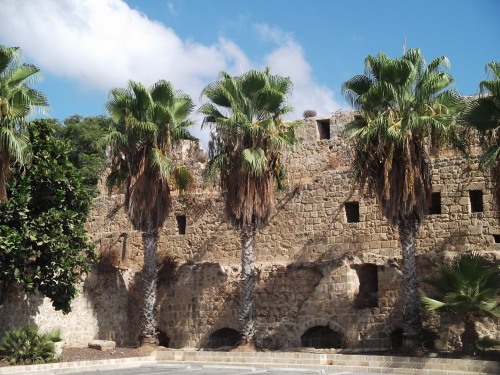



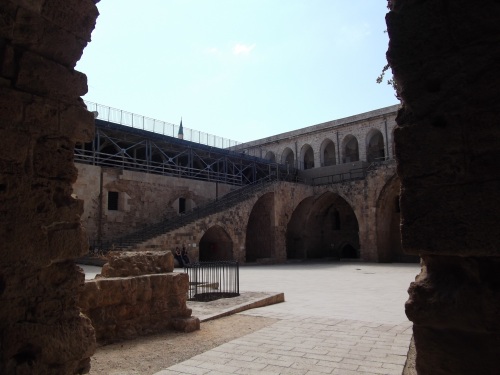
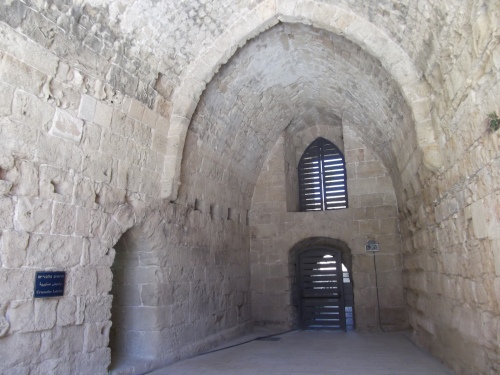

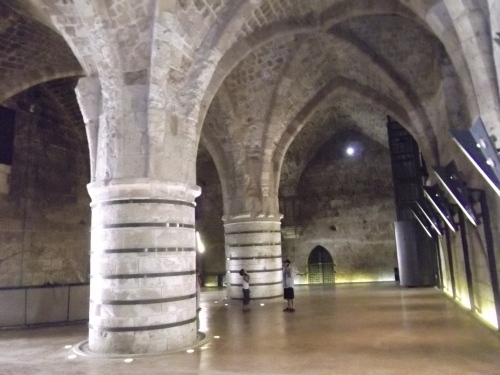
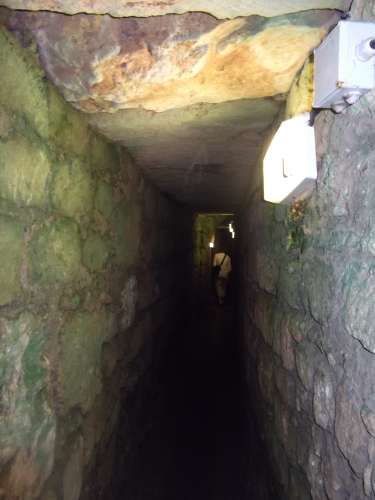

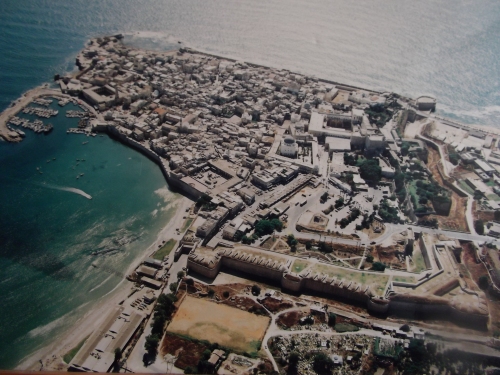
Thanks! Great info. Would you say Hospitaller Fortress handicapped accessible (with perhaps exception of tunnel?)
Uh, I don’t know for certain but I think it was relatively flat, so wheelchairs shouldn’t be too much of a problem. If there is an area that is inaccessible by wheelchair there is likely a way around it to continue on to the next room. Anything short of a wheelchair should be fine. You can check by calling the tourist office there: 972 4 9956707
[…] contested between the military orders and, after intervention by the pope and a treaty signed at Akko in 1262, the Hospitallers built another fortress with mills nearby, of which just stone […]
[…] watch the large catfish swimming beneath the bridge. Very similar to the marsh at Ein Afeq between Akko and Haifa, I already knew what to expect in the fauna department but there were a few surprises […]
[…] his way up the coast from Egypt and conquering Gaza, Jaffa and Haifa, Napoleon reached failure at Akko after an ineffective siege of the strongly fortified coastal city held by the Turks and resupplied […]
[…] a few kilometres to the northwest (although not to be confused with Tel Afeq at Ein Afeq between Akko and Haifa). During the Roman period a Jewish village existed, and during the Great Revolt, was […]
[…] government building, sarayas can be found in several old Israeli cities including Tzfat (Safed) and Akko, where the regional commands was located. Tiberias’ Saraya is two floors; the upper being the […]
[…] books were even burned. Frustrated, the Ramchal moved to the Holy Land and settled in port city of Akko. Tragically, he and his family perished in a plague but his teachings live on as a staple for […]
[…] was found in my favourite Crusader ruins, Montfort Castle. Articles of warfare from Tiberias and Akko were also on display, as well as a section of a Christian wall painting of plaster and pigment from […]
[…] which). The next day we stopped off for a short hike to Pigeon Cave, located between Karmiel and Akko, on our way to Ahihud for an annual barbecue. Parking with the aid of GPS in a gravel lot somewhat […]
[…] chambres. I noticed how small the dining room was, say, in comparison to the Crusader castles at Akko and […]
[…] with huge neo-Gothic pillars (similar to those in the Column Hall in the Hospitaller Fortress in Akko) pockmarked by bullets from the Six Day War, I felt pangs of longing for the romantic days of heavy […]
[…] ruler Saladin encamped when he laid siege on the Crusaders besieging the Muslim-held port city of Akko. The Crusader force, led by King Richard the Lionheart and King Philip II on Akko, eventually […]